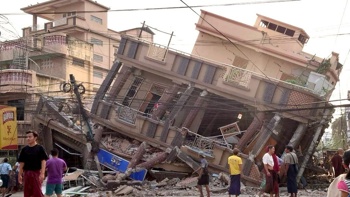
Deaths linked to Covid-19 in New Zealand have climbed steeply since mid-February as the Omicron outbreak takes its toll.
Ministry of Health figures put Covid-19 deaths within 28 days of being reported as a case - as of Thursday 24 March - at 192. But that figure doesn't tell the whole story.
Forty-one deaths have so far been officially classified as due to Covid-19. In addition, the ministry says "Covid-19 has contributed to four deaths, two deaths within 28 days have been ruled as not related to Covid-19, and 149 deaths are yet to be classified".
With so many Covid-19 deaths being recorded, what should we know about how they are measured and reported?
Is our new process for reporting them playing a part? And how will the coming weeks look in terms of reported deaths?
Changing how we report deaths
Earlier in March, director general of health Dr Ashley Bloomfield announced a change to the reporting of Covid-19 deaths in New Zealand.
From that day - 10 March - onwards, deaths are automatically reported if the person died within 28 days of a positive test result.
This is the same system used widely around the world.
Deaths are now reported in three categories:
- Where Covid-19 is the clear cause of death
- Where a person is found to have had Covid-19 when they died but it was not the cause of death
- When a person is known to have had Covid-19 when they died but their cause of death is not known
More details will also be included on deaths, and this may include some deaths reported outside of the 28-day window.
Now, where this new method may affect the death count is this: "Deaths are automatically reported if the person died within 28 days of a positive test result" and in particular "where a person is found to have had Covid-19 when they died but it was not the cause of death".
That may drive the number of deaths reported each day higher than deaths actually from Covid-19.
/cloudfront-ap-southeast-2.images.arcpublishing.com/nzme/4VPKE6W44JGRS36ACIMOPJ5ZPY.jpg)
Supplied / Ministry of Health
University of Otago epidemiologist professor Michael Baker says it is worth considering how valid some of the cases listed as deaths are.
"A problem with assessing Covid-19 deaths is whether a person died of their acute Covid-19 infection or an underlying illness," Baker says.
Having someone who has tested positive for Covid-19 and died in the next 28 days is a "pretty broad definition".
"It may be that when they go through the final mortality review process and some of them go to the coroner, they might pull some of those out and say, actually, while they detected [Covid-19], that wasn't the cause of death, so some of them might get removed [from the death count]."
Baker says it's worth having a "healthy suspicion for every bit of data" - and making sure your data is valid when analysing rates and measurements.
University of Canterbury Covid-19 modeller professor Michael Plank says people who died within 28 days of testing positive is a "number that you can easily count, and you can provide quickly".
But with "very, very high rates of infection in (the) community" with Omicron, "there's an increasing likelihood that some of those deaths will be what's called incidental, which means that yes, they died within 28 days of a positive test but the cause of death was actually unrelated".
But that information takes longer to get - maybe a coronial investigation is required.
The 28-day catch-all isn't a perfect solution.
"This is why you need to wait for the results and the official data to come through, which happens a little bit later," Plank says.
Ministry of Health data on deaths can be found here.
Ways to measure and record deaths
Baker says there are basically three different measures you may see reported when it comes to deaths.
The main one we're seeing is simply a count of deaths every day.
"Simple count data is important because each of those events means something. Particularly with deaths, it means a loss for people, for family and friends.
"[A simple death count] is a key indicator that a disease... is having an impact.
"But when you're looking at some trends in a more meaningful way, particularly if you're comparing countries, you'll want to convert that to a death rate or mortality rate, and that's usually expressed as deaths per 100,000 or deaths per million per year."
But mortality rates can be expressed in different ways, Baker says.
"Broadly, they're essential for comparing the mortality impact across countries which have very different populations, and it wouldn't make sense to compare the number across countries... you need a rate."
A mortality rate is also good for comparing geographic areas - district health boards in Aotearoa for example, or demographics - age groups or ethnicities.
Essentially, any comparison in a meaningful way requires rates rather than counts, he says.
Then there are the Case Fatality Rate (CFR) and Infection Fatality Risk (IFR) - they are different measures of the same thing.
Baker says the CFR is simply "If you become a case, what's your chance of dying from it?" In other words - the number of deaths divided by the number of cases.
Plank also points out that with the CFR, it's subject to how much testing is being done, and "you have to remember the death lag behind cases".
"We might be just about over our peak of cases, but it's likely that death will continue to rise because they lag behind, so actually most of our deaths are probably still to come.
"That makes our CFR at the moment appear to be lower than what it will probably end up."
"But that (the CFR) is actually not the most important number." This is where the IFR comes in. In short, Baker says that IFR calculates: "If you get infected with this virus, what's your chance of dying?"
Or to put it another way, the number of people who have died relative to the total number of people who've been infected (not just the number of infections recorded).
Infection Fatality Risk (IFR) is more important, Baker says, but it's harder to calculate. That's because it's based on everyone you think was infected - not just recorded cases.
"Basically the only way you can work out how many people got infected is with research studies... to say 'yeah, we think in New Zealand that half the country got infected'... and you might say, well, only one in five actually identified and reported it.
"This happens all the time with infectious diseases... so figuring out the IFR, the infection risk is important, but it's really difficult to do."
So to recap, there are three main measures for deaths - count data, population mortality and CFR/IFR.
Baker notes that there is a difference between rates or risks when it comes to Case Fatality Rate and Infection Fatality Risk - rates are expressed over a set time period (a year for example) and a denominator (say per 100,000), and risk is a probability of a bad outcome - there's no population or time and it is usually expressed as a percentage.
Excess deaths
This is another metric worth noting, Baker says.
"For much of the world they don't have very good high quality health systems, so they under-count. They don't have a lot of resources to put into testing people, so quite often if someone isn't tested before they die, they won't be counted as Covid deaths.
"So there's a huge under-reporting of Covid deaths and will also be some deliberate under-reporting, but the metric that's used to try and give a handle on that is excess deaths."
Calculating excess mortality rates is a good way of double-checking on earlier measures to ensure they're correct, Baker says.
Our World In Data says excess deaths or excess mortality is "measured as the difference between the reported number of deaths in a given week or month (depending on the country)".
A report on Nature.com in January said global Covid-19 excess deaths were estimated at double or even quadruple the 5 million-odd reported deaths.
Plank says "basically you (look at) the total number of people who are dying for any reason - is that higher or lower than what you would typically see in a normal year pre-Covid?"
It is calculated as excess deaths = reported deaths - expected deaths.
"So you can look at this as an indicator of - is the fact that we're in a pandemic adding to our total mortality with total number of people who are dying?
"It's different at the moment, but over the last couple of years New Zealand has in fact had less deaths, whereas you know, most countries who've had big Covid waves have had a lot more deaths than normal because so many people have died from Covid."
In fact, Aotearoa's excess deaths are currently negative - potentially a result of reduced mortality due to a reduction in things like seasonal influenza due to Covid-19 health measures. That's not the case for most of the world.
Plank says the excess deaths metric is probably going to become more important going forward.
"As we move to a situation where Covid is endemic - it's not going away - what is important is the health burden that it's creating relative to other infectious diseases and other causes of death or causes of illness.
"So I think that context of excess mortality will start to become more important. I mean, on average New Zealand in a normal year has about 100 deaths per day - that's a very, very ballpark figure, and of course that will vary a lot between summer and winter, and it will vary from year to year depending if you have a bad flu season, for example, but that gives you an idea of the, you know, what is a sort of normal background level of mortality for New Zealand."
That Nature article also points out another challenge, which relates to the next subject we'll discuss: "Working out (excess deaths) is a complex research challenge. It is not as simple as just counting up with each country's excess mortality figures. Some official data in this regard are flawed, scientists have found. And more than 100 countries do not collect reliable statistics on expected or actual deaths at all, or do not release them in a timely manner."
What can we expect going forward?
Our mortality rate has skyrocketed recently.
After holding steady at about five per million from early 2020 until late last year, it jumped to about 10 per million for several months - until February 2022.
Since then, it has gone rapidly up to reach close to 40 deaths per million.
We're in the middle of the pack when it comes to mortality rates internationally, Plank says.
"We're sort of sitting in the middle of a bunch of countries like Germany, UK, Switzerland and the USA... in the two to four deaths per million per day (range)."
But overall, our deaths are still low compared to many countries because we avoided massive death tolls recorded in other countries over the past two years, Plank says.
As for the coming weeks and months, Baker says "there's a lag of deaths and we first see the peak of cases, then we see a peak of hospitalisations, and then we see a peak of deaths after that, and there's lags of several weeks in there.
"That's why early on we saw hundreds of thousands of cases, but not many deaths, but they're catching up now unfortunately, and they're tracking up and they'll be in that 10 to 20 range for several weeks."
At the moment, Omicron appears to be peaking in New Zealand as a whole.
It peaked in Auckland about two weeks ago and much of the North Island about a week ago, and for the rest of the North Island and the South Island it may be peaking mid-late this week, Baker says.
"The hospitalisations in Auckland peaked about two weeks after cases, but the rest of New Zealand is just still peaking in cases so I think (it) will be another two weeks from now before hospitalisations peak.
"And the deaths generally peak about two weeks after that so I would say we'll see peak mortality within the next month, probably for New Zealand as a whole.
"But those waves will take until the end of late April... deaths will stay at a raised level right through until May, probably."
Plank says there will be "quite a lot" of variability in daily numbers of deaths recorded.
He says we are likely to end up with deaths "in the hundreds" from the Omicron wave.
Take your Radio, Podcasts and Music with you









